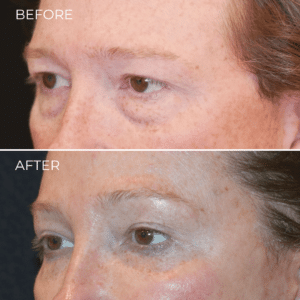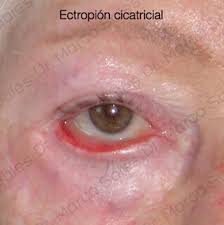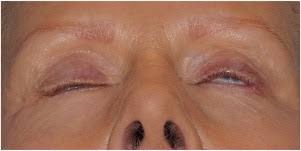Potential Blepharoplasty Complications
Blepharoplasty, or eyelid surgery, is one of the most commonly performed facial cosmetic procedures. It’s an excellent way to refresh your appearance by removing excess skin, fat, and even muscle around the eyes. However, as with any surgery, blepharoplasty comes with potential risks and complications. Whether you’re considering upper eyelid surgery, lower eyelid surgery, or both, it’s essential to be informed about what could go wrong and how to minimize your risks.

My goal is to ensure my patients achieve beautiful, natural results while fully understanding the procedure and its potential complications. Let’s break down the risks associated with blepharoplasty, so you’re armed with the knowledge you need to make an informed decision.
1. Eyelid Asymmetry
Eyelid asymmetry is one of the most common concerns after blepharoplasty. This can occur due to differences in swelling during recovery or uneven tissue removal during surgery. In most cases, minor asymmetry resolves as the healing process progresses. However, if the asymmetry is significant and persists, revision surgery may be needed to balance the eyelids and achieve a more symmetrical appearance.
2. Ectropion (Outward Turning of the Lower Eyelid)
Ectropion is a complication where the lower eyelid turns outward, exposing the inner lining of the lid. This often happens when too much skin is removed or if scar tissue forms during healing, tethering down the eyelid. My technique has evolved over time to minimize the risk of ectropion. By leaving the middle layer of the lower eyelid (middle lamella) intact, the risk of scarring is very low.

Mild cases may improve with non-surgical treatments like massage and lubricating eye drops. For severe cases, corrective surgery is necessary to restore the eyelid to its proper position.
3. Lagophthalmos (Difficulty Closing the Eyes)
Lagophthalmos, or difficulty closing the eyes, can be temporary or permanent after blepharoplasty. Temporary lagophthalmos is common and due to swelling. Permanent lagophthalmos occurs when too much skin is removed during upper eyelid surgery.

Patients may experience discomfort, dry eyes, or difficulty sleeping due to incomplete eyelid closure. Temporary measures include using eye ointments, taping the eyes shut at night, and humidifying chambers. For persistent issues, revision surgery with skin grafting may be required to restore normal eyelid function and protect the eye.
4. Overcorrection or Undercorrection
Overcorrection happens when too much skin, fat, or muscle is removed, leading to a hollow or unnatural appearance. On the other hand, undercorrection occurs when insufficient tissue is removed, leaving the eyelids looking unchanged. Overcorrection can often be treated with fat grafting or fillers to restore lost volume. Undercorrection may require a secondary surgery to achieve the desired result.
5. Scarring
Visible scarring can result from poor wound healing, infection, or excessive tension on the surgical incisions. Although blepharoplasty scars are typically well hidden within the natural folds of the eyelid, some patients may develop thicker or more noticeable scars. Genetics play a major role in how scarring occurs after any surgery. Those with thicker skin, like African Americans and Asian Americans, can be predisposed to thicker scars.
I follow every patient until they are fully healed after surgery. Treatments like laser therapy, steroid injections, or scar revision surgery can help improve the appearance of scars if needed, but this is very rare after blepharoplasty surgery.
6. Ptosis (Drooping of the Upper Eyelid)
Ptosis, or drooping of the upper eyelid, can occur if the levator muscle, which is responsible for lifting the eyelid, is damaged during surgery. It may also arise if pre-existing ptosis is not addressed before the procedure.
Corrective surgery is often required to tighten or repair the levator muscle, allowing the eyelid to function properly and achieve the desired aesthetic. Ptosis surgery is often performed by an oculoplastic surgeon.
7. Vision Changes
While rare, vision changes can occur after blepharoplasty due to complications like a hematoma (a collection of blood) behind the eye or trauma during surgery. A hematoma requires immediate medical attention, as it can lead to permanent vision loss if not treated promptly. Surgical drainage of the hematoma or other corrective measures may be necessary to preserve vision.
8. Prolonged Swelling or Bruising
Swelling and bruising are normal parts of the recovery process, but they can persist longer than expected in some cases. Factors such as individual healing variability, certain medications, or surgical trauma can contribute to prolonged swelling. Interventions like lymphatic massage and cold compresses can help with swelling, while lasers or IPL can help with persistent bruising.
9. Dry Eyes
Dry eyes are a common complaint after blepharoplasty, often caused by temporary irritation or incomplete eyelid closure. I recommend that every blepharoplasty patient keep artificial tears on hand after surgery. If the problem persists, surgical correction may be required to improve eyelid function and protect the eyes.
How to Minimize the Risk of Complications
Following your pre- and postoperative instructions is key to a smooth recovery. This includes avoiding blood-thinning medications, quitting smoking, and using prescribed eye drops or ointments as directed. Managing your expectations is equally important; understanding what the surgery can and cannot achieve helps reduce the likelihood of dissatisfaction. Finally, attending follow-up appointments ensures that any potential issues are addressed promptly, allowing for a successful outcome.
When to Contact Us After Your Surgery
After surgery, it’s normal to experience some swelling, bruising, and mild discomfort. However, you should contact your surgeon immediately if you experience sudden vision changes, severe pain not relieved by medication, excessive bleeding, or signs of infection such as redness, warmth, or pus. Difficulty breathing or swallowing, which could indicate a rare but serious allergic reaction, also warrants immediate medical attention.
Achieve Natural Blepharoplasty Results With Confidence
Blepharoplasty can rejuvenate your appearance and boost your confidence, but it’s important to be aware of the potential complications.
If you’re considering blepharoplasty and have questions about the procedure or its risks, feel free to schedule a consultation with me. I’m here to help you make the best decision for your unique needs and goals. Together, we can achieve a refreshed, youthful look you’ll love for years to come.